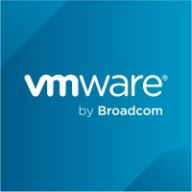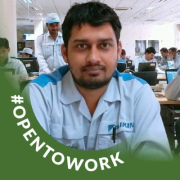

VMware Cloud Director and CloudStack compete in the cloud services platform category. VMware Cloud Director seems to have the upper hand due to its comprehensive suite of features and strong integration within the VMware ecosystem.
Features: VMware Cloud Director offers scalability and a robust platform for cloud services. It integrates well with VMware's ecosystem, providing advanced automation with vRealize Automation and detailed monitoring with vRealize Operations. CloudStack supports multiple hypervisors, provides strong networking and virtualization features, and is known for its flexibility as an IaaS tool.
Room for Improvement: VMware Cloud Director could improve its integration with third-party services, enhance ease of deployment, and address pricing concerns. Users also mention the need for better hyperscaler integration and enhanced billing features. CloudStack requires improvements in stability for virtual routers, enhanced documentation, and better promotion to increase market presence. Simplifying rolling updates and maintenance operations is also needed.
Ease of Deployment and Customer Service: VMware Cloud Director supports diverse deployment environments like hybrid and private clouds. It features commendable customer service, although technical support can be inconsistent. CloudStack requires more user involvement during deployment and troubleshooting, with less extensive support networks. This makes VMware more appealing to businesses seeking comprehensive support.
Pricing and ROI: VMware Cloud Director is expensive, with high licensing costs that can impact smaller companies. Despite the cost, some users find the investment justified by its features. High total costs of ownership can affect its ROI in budget-sensitive projects. CloudStack, being open-source, is cost-effective, with no licensing fees and lower operational costs, offering potentially higher ROI if support needs are minimal.
| Product | Market Share (%) |
|---|---|
| VMware Cloud Director | 5.4% |
| CloudStack | 4.0% |
| Other | 90.6% |


| Company Size | Count |
|---|---|
| Small Business | 13 |
| Midsize Enterprise | 6 |
| Large Enterprise | 12 |
| Company Size | Count |
|---|---|
| Small Business | 24 |
| Midsize Enterprise | 11 |
| Large Enterprise | 36 |
VMware Cloud Director, also known as vCloud Director, is a cloud management tool that offers secure, flexible, and efficient cloud resources to thousands of enterprises and IT teams across the world. The solution serves as one of the leading cloud service-delivery platforms for businesses that want to manage and operate their services effectively. By deploying this solution, companies can benefit from virtualized networking, computing, security, and storage. These benefits can be received in a timely manner, as the infrastructure of the product is operationally ready within minutes and clients do not need to install and configure physical infrastructure.
One of the biggest advantages of vCloud Director is that it allows users to build cloud-ready applications. In several ways, it facilitates the process for developers, including:
vCloud Director Features
This VMware product has various features through which users can virtualize their data and benefit from quality management solutions. Among the popular capabilities of vCloud Director are:
vCloud Director Benefits
VMware vCloud Director offers various benefits to its users. Some of these include:
Reviews from Real Users
Ajit Y., a cloud architect at a computer software company, likes VMware vCloud Director because it is a stable, truly multitenant software and the go-to tool for infrastructure as a service.
Kashif F., a divisional engineer at National Telecom Corporatio, rates vCloud Director highly because the product can be used for infrastructure provisioning without using a platform service.
We monitor all Cloud Management reviews to prevent fraudulent reviews and keep review quality high. We do not post reviews by company employees or direct competitors. We validate each review for authenticity via cross-reference with LinkedIn, and personal follow-up with the reviewer when necessary.